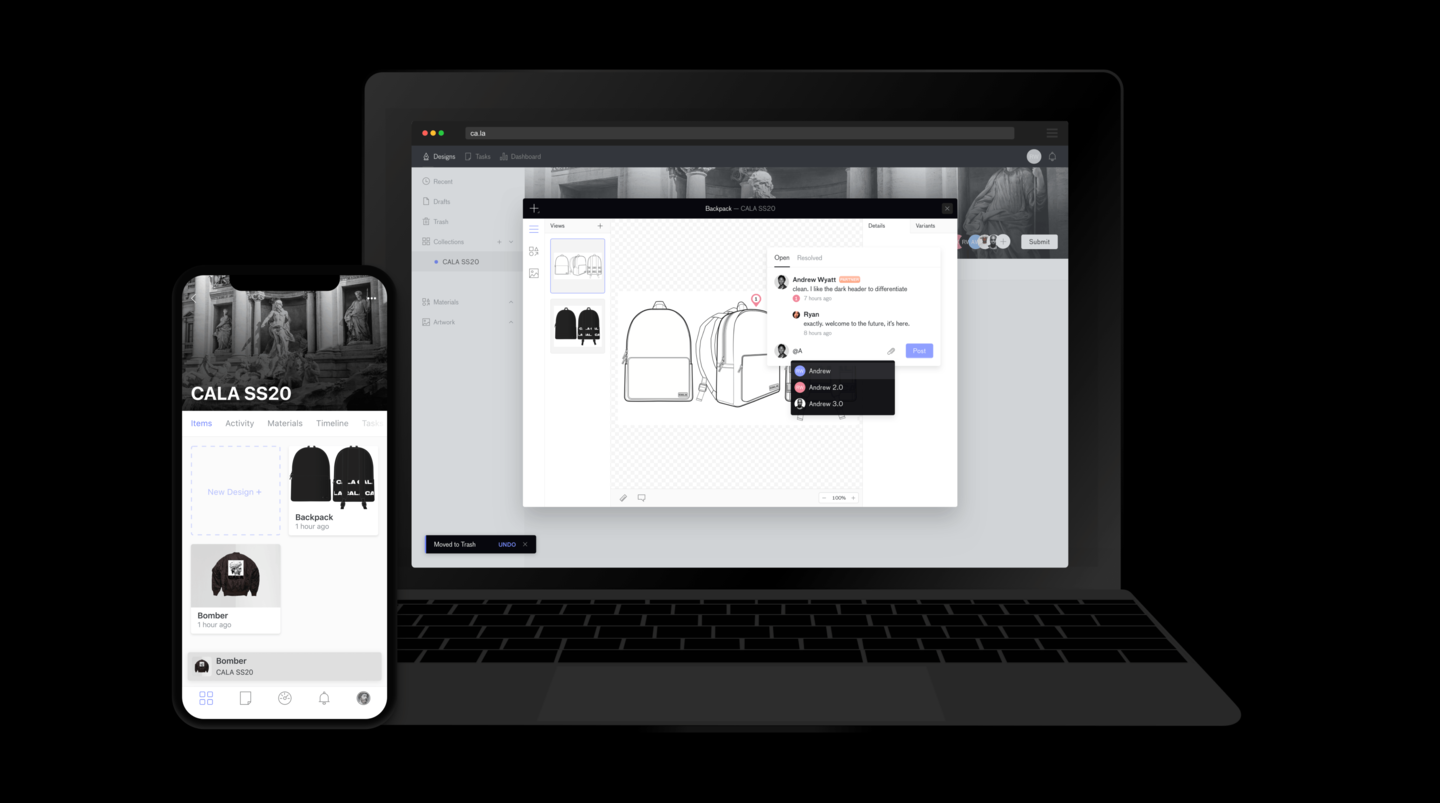NEW YORK, United States — Andrew Wyatt, founder of fashion supply chain platform Cala, is accepting applications to be the next Kylie Jenner.
Cala pairs fashion brands with manufacturers around the world, providing an online platform for both parties to manage the garment supply chain, from producing samples to financing and fulfillment. Wyatt said he’s targeting his service at the “bleeding edge” of fashion, including emerging designers and influencers who have creative vision (or at least a Kardashian/Jenner’s merchandising ambitions) but not the connections to quickly get an apparel line into production.
Early clients include the avant-garde brand Vaquera, rapper A$AP Ferg and the model Jazzelle Zanaughtti (@uglyworldwide on Instagram). A public waitlist opens on Wednesday.
The company joins a crowded field of startups taking aim at one of fashion’s more intractable problems: the mismatch between the rise and fall of trends — made faster and faster by the internet — and the glacial pace of the industry’s supply chain, where designs might take a year or more to reach stores. It’s a particularly thorny issue for smaller brands, as the fastest and cheapest manufacturers typically require minimum production runs in the thousands, often far beyond what they need, or can afford.
Wyatt said influencers and other fashion novices have it worse, lacking basic contacts or knowledge about the less-glamorous parts of the industry, from financing to negotiating with far-flung manufacturers. He said his goal with Cala is to help influencers, musicians and other creatives launch their merchandise while they're at their hottest, and before their ideas get co-opted by bigger brands.
“There’s a frustration to seeing some of the coolest people on the internet create amazing stuff, but then another big company rips off their design and goes and makes millions off of it,” Wyatt said. “Individual creators can’t be competitive from a supply chain perspective so they’re not able to capitalize on their ideas.”
With Cala, designers submit sketches and specifications for their collections and wait for a manufacturer to submit a bid (Wyatt compared the process to Uber’s ride match service, with Cala calculating the right price to attract a manufacturer as well as its own cut). From there, the two sides can exchange samples, arrange fulfillment and over 40 other tasks meant to guide the production process from sketches to stores. The service is launching with a network of manufacturers at various price points around the world, including China, Portugal and Peru, with a capacity to produce about 500,000 items a month, Wyatt said.
Madeline Poole said she reached out to Cala a few months ago after seeing an Instagram ad. Poole rose to online fame through her nail art, but was struggling to launch a line of clothes and accessories on her own. Most manufacturers weren’t interested in producing a few hundred handbags or T-shirts, and the few samples she did receive were “horrific,” she said.
Cala advised her on how to order samples and other details. “It’s like half your brain can turn off,” Poole said. Most importantly, the platform lined up a manufacturer willing to make only 150 bucket hats, which went on sale this week.
“I was scared to start this, and this made it feel less daunting,” she said. “ I can make one little thing … and if it goes well I can make more. If it doesn’t go well I’m not losing thousands of dollars. The low stakes makes it feel less intimidating.”
To be sure, new fashion labels have a low success rate, and there are plenty of reasons why they fail beyond the supply chain. Wyatt and other Cala employees provided Poole and other early customers with one-on-one guidance through the production process, a level of service that becomes harder to offer as more designers join the platform. Cala also has to prove it can help a business not only launch, but scale up. Many of its early customers also used the service for one-off, limited runs of a few dozen T-shirts or sweatshirts. Producing thousands of items on a recurring basis presents a different challenge entirely.
Still, demand for services like Cala is growing, driven by the increasingly fast pace of the industry. Brands like Fashion Nova now rush out looks days after they’re worn on the red carpet and direct-to-consumer brands operate shorter production schedules from the get-go, bypassing the traditional fashion seasons.
Talent management agencies that work with influencers offer nuts-and-bolts assistance with launching a clothing line. Alibaba operates a massive fashion supplier portal.
Other supply chain startups include Zilingo, which raised $54 million earlier this year for its platform, Zilingo Asia Mall, that also pairs fashion brands with manufacturers. The company is helping launch two influencer-led labels early next year and is building out its financing services, a spokesperson said.
This is the second iteration of Cala, which has raised $2.5 million from Real Ventures, Hustle Fund and other investors. Wyatt, a veteran of now-defunct on-demand logistics service Shyp, launched the company in 2016 as a service that rendered made-to-measure garments using 3D modeling, which would theoretically cut down on costly returns. He said he quickly ran into a problem: customers like Wiz Khalifa, who used Cala to produce a capsule collection last year, “don’t care about returns — there’s a secondary market for everything.”
What his clients did want is help getting their clothes made in the first place, an “epiphany” that sent the company on a new course, Wyatt said.
“We realized... we came up with a solution but didn’t truly understand the problem,” he said. “Since then we’ve furiously worked toward really trying to solve for what we think is truly the biggest problem in fashion.”
Related Articles:
[ The Secret Journey of a Fashion Piece: Logistics and Supply ChainOpens in new window ]
[ How Fashion Should (and Shouldn't) Embrace Artificial IntelligenceOpens in new window ]
[ The Need for Speed: How US Retailers Can Keep UpOpens in new window ]


